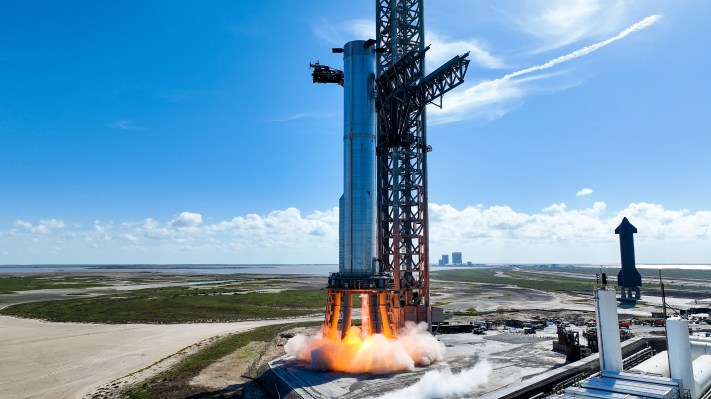SpaceX just got one step closer to the first orbital test flight of its launch system Starship with the successful static fire test of a prototype Super Heavy booster late Tuesday afternoon. That booster, “Booster 7,” was rolled to the launch pad overnight last Friday.
The successful test is a notable milestone for SpaceX, which has been working on its Starship program from its Boca Chica development facility in southeast Texas. It comes just a few weeks after a previous booster test resulted in an explosion at the launch pad — though the damage was clearly not catastrophic, as this same booster was tested today.
Just a single Raptor 2 engine was fired during the test, rather than the 33 engines that will ultimately lift Starship to orbit, and the entire test lasted only a few seconds. During a static fire test, the engines spin up to ignition, but the rocket stays on the pad, so engineers can get a good sense of an engine’s performance prior to an actual launch.
NASA Spaceflight livestreamed the test and captured the exact moment of ignition:
Booster 7 Static Fire! Single Raptor 2. Looked great!https://t.co/JVvjW7OkqS pic.twitter.com/qOrB0cJgtL
— Chris Bergin – NSF (@NASASpaceflight) August 9, 2022
The two-stage Starship is comprised of a Super Heavy booster and an 164-foot-tall upper-stage called Starship. The launch system, which stands at 394 feet in total, is designed to be fully reusable — the only rocket in its class that’s designed for reusability by a long margin. It’s a key part of SpaceX CEO Elon Musk’s goal to make humans multi-planetary and to spread, in his words, “the light of consciousness” throughout the universe.
Although Musk has postulated a number of possible timelines for the first orbital flight test of Starship, he most recently estimated on Twitter that “a successful orbital flight is probably between 1 and 12 months from now.”
